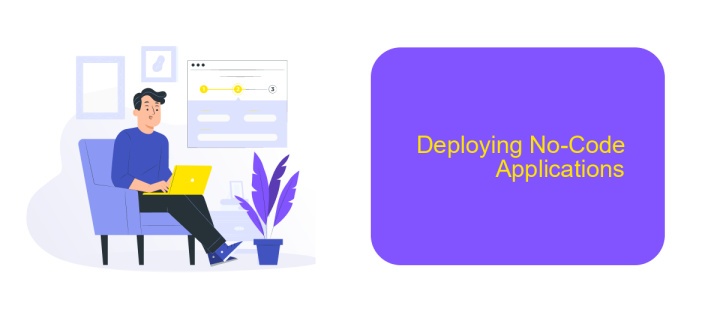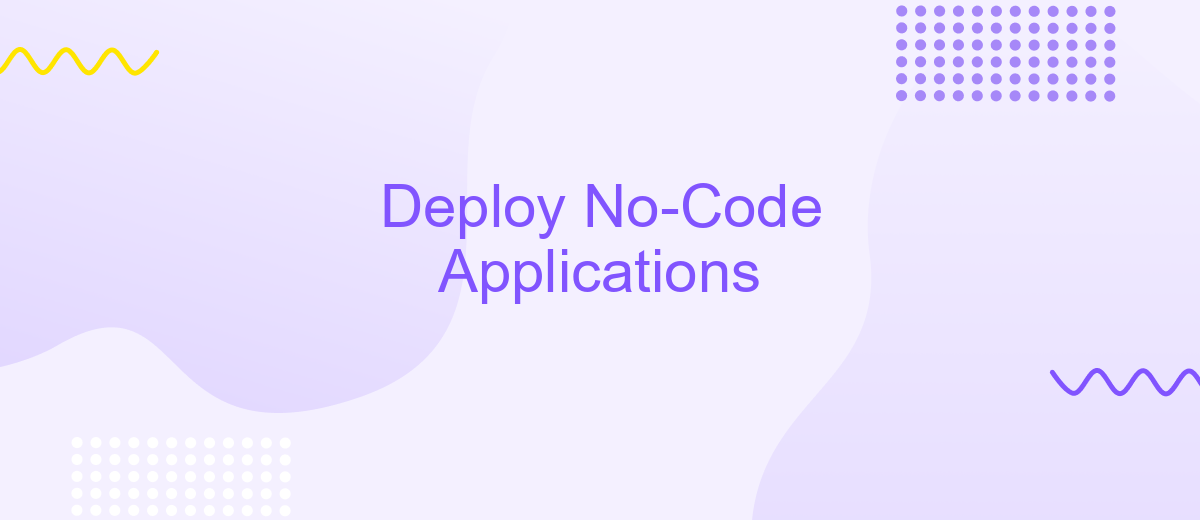Deploy No-Code Applications
In today's fast-paced digital landscape, the demand for rapid application development is higher than ever. Deploying no-code applications offers a revolutionary solution, enabling businesses to create and launch software without traditional programming. This approach not only accelerates time-to-market but also democratizes app development, allowing non-technical users to contribute to innovation. Discover how no-code platforms are transforming the way we build and deploy applications.
Introduction
Deploying no-code applications has revolutionized the way businesses approach software development. By enabling individuals without programming expertise to create and launch applications, no-code platforms have democratized access to technology. This shift not only accelerates the development process but also reduces costs and empowers more people to bring their ideas to life.
- Rapid prototyping and deployment
- Cost-effective solutions
- Empowerment of non-technical users
- Scalability and flexibility
One of the essential aspects of deploying no-code applications is the integration with various services and tools. Platforms like ApiX-Drive simplify this process by offering seamless integrations with numerous applications, ensuring that your no-code solutions can communicate effectively with other systems. This capability is crucial for maintaining efficient workflows and enhancing the overall functionality of your applications.
Benefits of Using No-Code Applications

No-code applications offer a plethora of benefits, making them an attractive option for businesses of all sizes. One of the primary advantages is the significant reduction in development time. Traditional coding can take months or even years to bring an application to market, but no-code platforms enable rapid prototyping and deployment, often within days or weeks. This accelerated timeline allows companies to respond quickly to market demands and stay ahead of competitors. Additionally, the cost savings are substantial, as there's no need to hire expensive developers or maintain extensive IT infrastructure.
Another key benefit is the democratization of app development. No-code platforms empower non-technical users to create and manage applications without needing to write a single line of code. This opens up opportunities for innovation across all departments, from marketing to HR. Furthermore, integrating various services becomes a breeze with tools like ApiX-Drive, which simplifies the process of connecting different apps and automating workflows. This ensures seamless data flow and enhances operational efficiency, allowing businesses to focus on growth and customer satisfaction.
Choosing the Right No-Code Application

Choosing the right no-code application is crucial for ensuring your project’s success and efficiency. With a myriad of options available, it’s important to consider several key factors before making a decision.
- Identify Your Needs: Determine the specific requirements of your project. Are you looking for a tool to create websites, automate workflows, or build mobile apps?
- User-Friendliness: Ensure the platform is intuitive and easy to use, especially if your team lacks technical expertise.
- Integration Capabilities: Check if the application supports integration with other tools and services you use. For instance, ApiX-Drive can simplify the process of integrating various applications without coding.
- Scalability: Assess whether the platform can scale with your business needs as they grow.
- Cost: Evaluate the pricing structure to ensure it fits within your budget while providing the necessary features.
By carefully considering these factors, you can select a no-code application that not only meets your current needs but also supports future growth and integration capabilities. This approach will help you maximize efficiency and streamline your operations effectively.
Deploying No-Code Applications

Deploying no-code applications is a straightforward process that allows users to launch their projects without needing extensive technical knowledge. The first step is to choose a no-code platform that aligns with your project requirements. Popular options include Bubble, Adalo, and Glide, each offering unique features and capabilities.
Once you have selected a platform, the next step is to design and build your application using the platform's intuitive drag-and-drop interface. These platforms provide pre-built templates and components, making it easy to create functional and visually appealing applications. Ensure that you test the application thoroughly to identify and fix any issues before deployment.
- Choose a no-code platform (e.g., Bubble, Adalo, Glide)
- Design and build your application
- Test the application thoroughly
- Deploy the application to your desired environment
For integrating your no-code application with other services, consider using ApiX-Drive. This tool simplifies the process of connecting your application to various APIs and automates data transfer between different platforms. By leveraging ApiX-Drive, you can enhance the functionality of your application and streamline workflows, ensuring a seamless user experience.
Best Practices for Deploying No-Code Applications
When deploying no-code applications, it is crucial to ensure that your app is thoroughly tested across different devices and user scenarios. This helps in identifying potential issues before they affect the end-users. Utilizing user feedback during the testing phase can provide valuable insights into areas that need improvement. Additionally, make sure to regularly update your application to incorporate new features and security patches, keeping it in line with the latest technological advancements.
Integrations play a vital role in the functionality of no-code applications. Tools like ApiX-Drive can simplify the process of connecting your app with various services, enabling seamless data transfer and automation. Ensure that your integrations are properly configured and tested to avoid any disruptions in service. Monitoring the performance of these integrations is also essential, as it allows you to quickly identify and resolve any issues that may arise, ensuring a smooth user experience.
FAQ
What is a no-code application?
How do I deploy a no-code application?
Can I integrate my no-code application with other tools and services?
What types of applications can I build using no-code platforms?
Is it possible to scale a no-code application?
Strive to take your business to the next level, achieve your goals faster and more efficiently? Apix-Drive is your reliable assistant for these tasks. An online service and application connector will help you automate key business processes and get rid of the routine. You and your employees will free up time for important core tasks. Try Apix-Drive features for free to see the effectiveness of the online connector for yourself.

